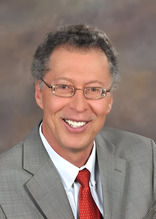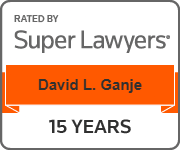Aquifers are not forever
Are aquifers stable? Some people, and apparently some of those who manage groundwater, assume that aquifers are a relatively constant environment. They are not. In South Dakota the authority to manage state groundwater, in non-Indian Country, is given to state government and its appointed state boards. The state has oversight over the use of, quality of and available quantities of groundwaters. State government is the trustee of public waters.
Since 1978 the state has had statutory authority as a ‘gatekeeper of groundwater’. Under the gatekeeper law a permit or license to withdraw groundwater may not be given to a private or business applicant unless the terms of the gatekeeper statute have first been met. An applicant must show it is probable the quantity of water to be withdrawn annually from the source will not exceed the quantity of the average estimated annual recharge of water to the aquifer.
The state has publicly said, “State law requires a balance of SDCL 46-1-4 requiring water to be put to the fullest extent it is capable with SDCL 46-6-3.1, which provides that over the long-term we do not withdraw more than is recharged so the resource is maintained into perpetuity.” The state’s position on water use is incorrect.
It is the responsibility of a water permit applicant to satisfy the terms of the gatekeeper law. The law is not a balancing test with other rules or statutes. The law says: You can mine minerals but you cannot mine water. Recharge is the natural replenishment of aquifers. Recharge has importance where groundwater is taken for commercial, agricultural, or human use. Recharge of an aquifer is a process in opposition to the withdrawal of water from the same aquifer. The gatekeeper statute requires a quantification analysis based on the “water withdrawn annually” as against the “average estimated annual recharge.” If aquifers were stable, forever, and constant the state’s gatekeeper statute would be unnecessary.
Government’s encouragement of large users of water held in trust by the state as water management should not be validated without the proper application of the state’s gatekeeper law. A predisposition to welcome large users is not unique however to South Dakota. Kansas in recent years has had water availability problems, yet the state encouraged the relocation of dairy operations to the state. It is reported that former Kansas Governor Sam Brownback on later learning the extent of water problems said he felt like a “cattle rustler” by recruiting dairies to the state.
In 2012 a circuit court in South Dakota handled an appeal from a decision of the Water Management Board which had approved a large dairy operation water use permit. No study or modeling of the aquifer’s waters was presented by the applicant or by the state DENR (now DANR) to support the application. The parties relied on data from observation wells. This data is known as a hydrograph. The court ruled that this evidence was inadequate to support a large future draw of water from the aquifer. The court stated, “The court finds it perplexing that the board chose to analyze observation well data, almost exclusively, to satisfy the requirement set out in [the gatekeeper statute].” The court ruled that the test was, “whether it is probable that the quantity of water withdrawn annually from a groundwater source will exceed the quantity of the average estimated annual recharge of water to the groundwater source, as required by [the gatekeeper statute]. The court holds that simply looking at two hydrographs that contain three decades’ worth of observations and comparing the beginning observation with the last observation does not approach the requirements of [the gatekeeper statute].”
To address this challenge, in May of 2018 I recommended that a water permit applicant, who will use large quantities of water, provide an aquifer recharge study as a required part of the application process. Rest assured; no action has been taken on my recommendation. It has been business as usual.
In 2020 the state Water Management Board granted a permit for a large livestock production facility and reviewed two aquifers for consideration. No studies or modeling were done. The permit was granted to the applicant for one of the two possible aquifers apparently because the actual location of one of the aquifers was unclear. Concerning the first aquifer, no studies had been done to estimate the recharge rate for the aquifer, although based on observation wells the state determined that recharge is greater than discharge. For the second aquifer there were no estimates for the entirety of the recharge to the aquifer. And the state indicated that without a reliable recharge rate, there is no way to compare the recharge and discharge rates directly. On this second aquifer the nearest observation well to the project site showed a decline in water head pressure over an 18-year period. This did not present a problem. The state suggested the decline in hydraulic head is likely due to uncontrolled flowing wells and not well withdrawals for beneficial use. An uncontrolled or free flowing well is an artesian well either without a mechanism for controlling discharge or a well that is allowed to flow continuously at the land surface and includes wells that only flow internally below land surface through corroded or leaky casings. Curiously, the permit was granted for one of the two aquifers to be determined by the applicant “but not for both.”
While some aquifers have an ebb and flow, I question whether an aquifer, if lower than it should be, will recharge in a natural and timely fashion like that of an aquifer maintaining a normal amount of water. I don’t have an answer to the question, but the state has given us an answer. The state’s gatekeeper statute provides a commonsense standard for aquifer management. The late USD Professor John Davidson said, “South Dakota’s approach is both bold and conservative; bold because it sets the State apart from its western cousins, and conservative because it places preservation of groundwater ahead of short-term exploitation.”




